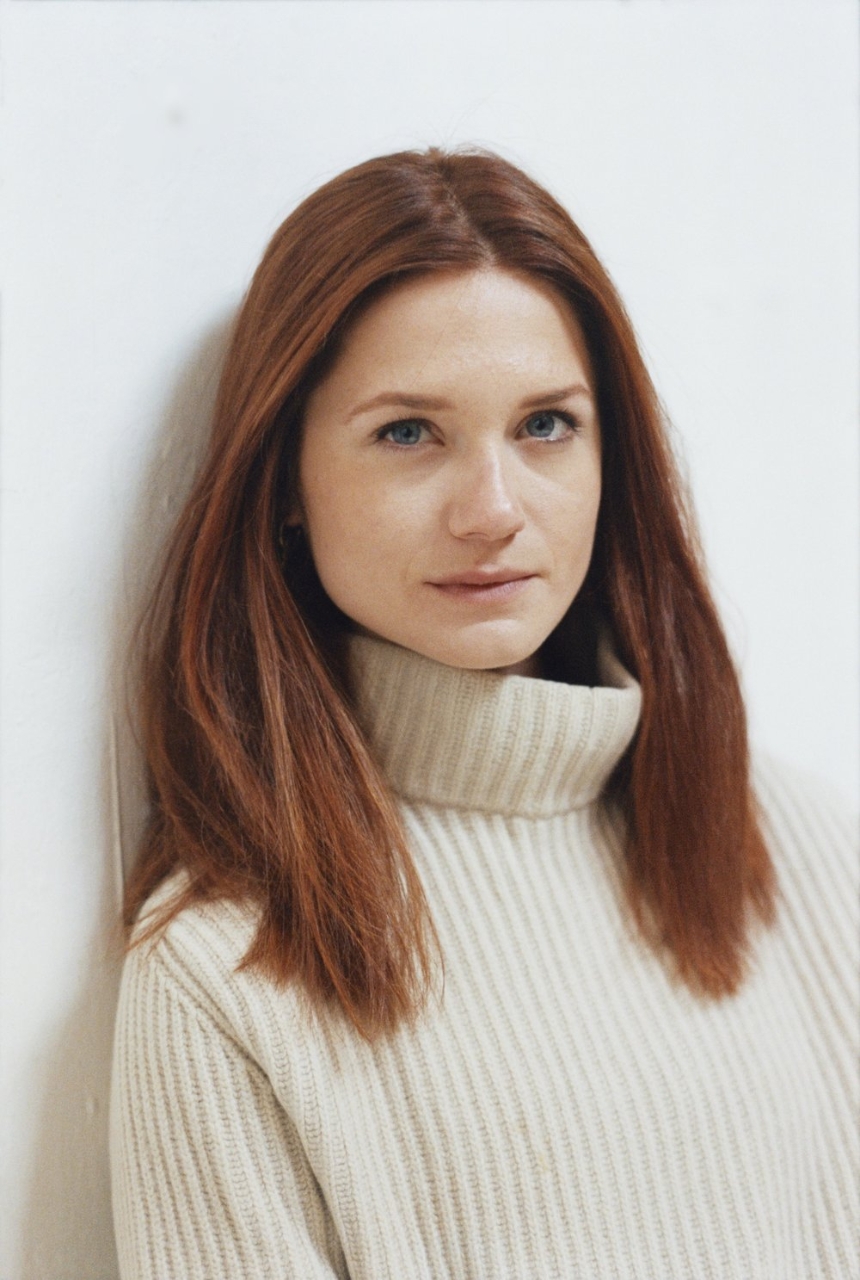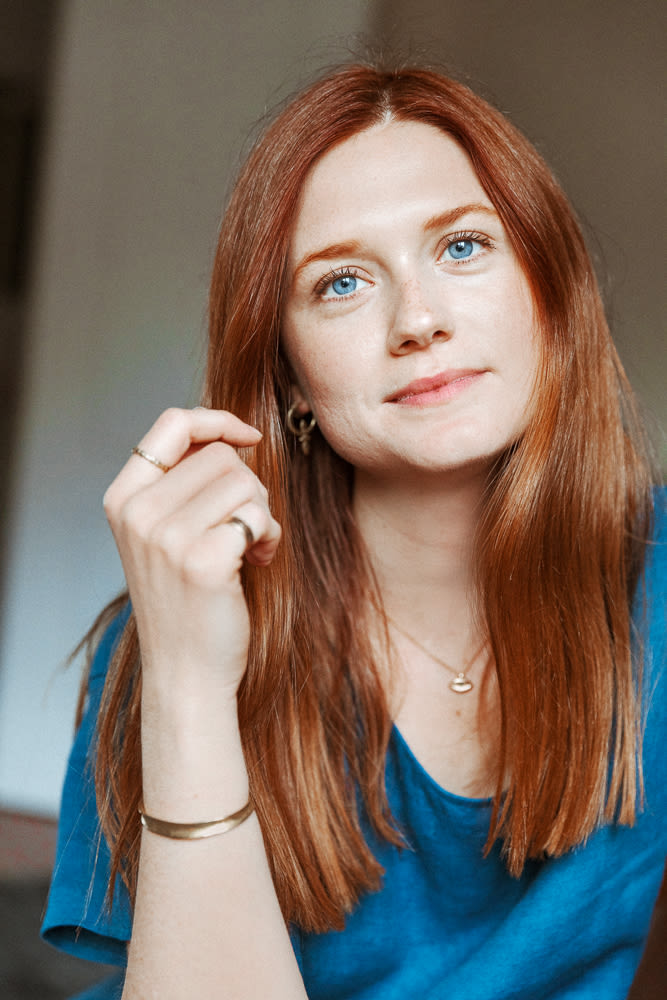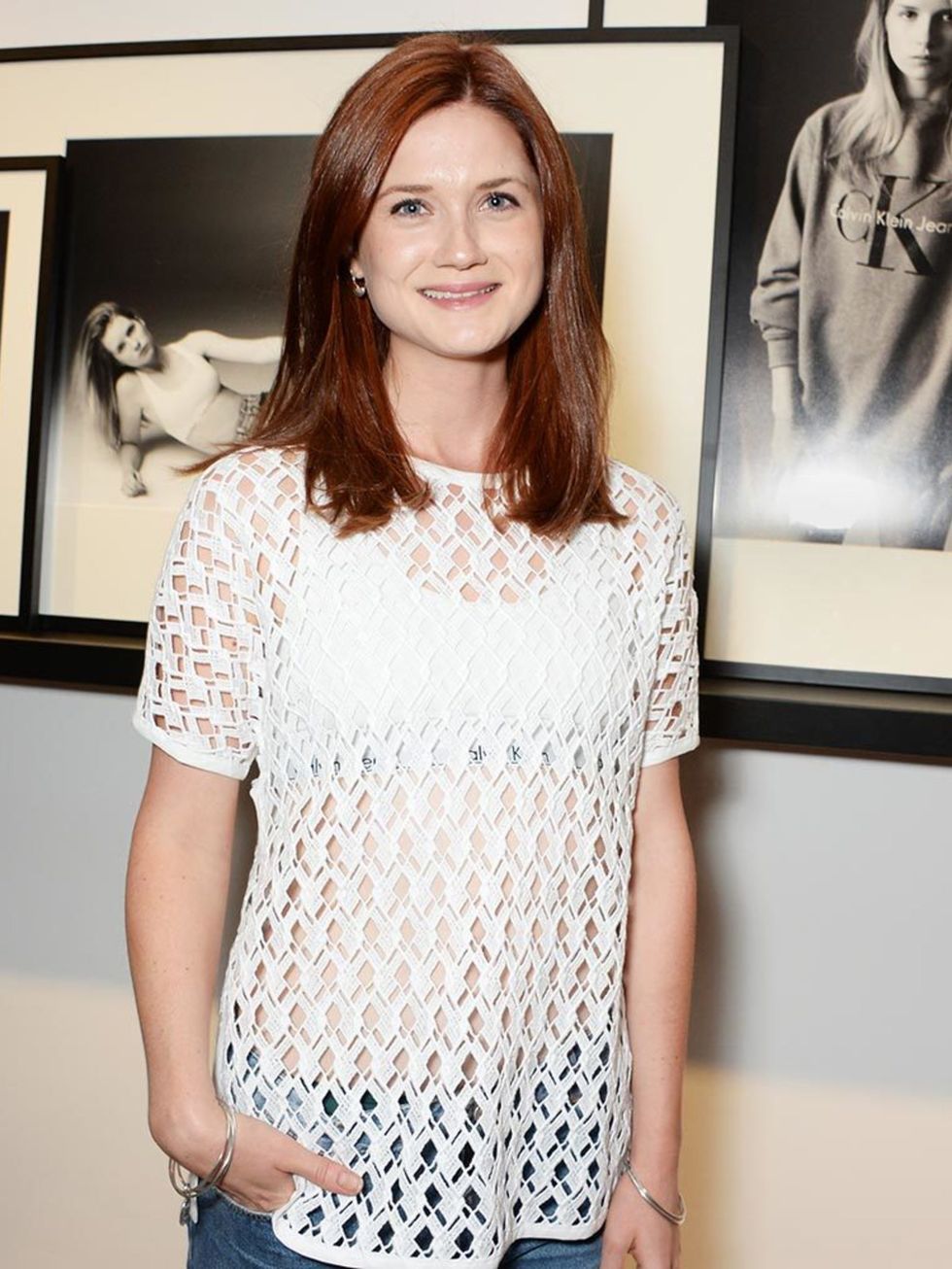Bonnie Wright Director - A Look Into Her Creative Path
Many people know Bonnie Wright from her time portraying a certain character in a beloved series of fantasy films, yet her creative journey has taken a rather interesting turn beyond acting. She has, you know, quietly but steadily built a reputation for herself as a filmmaker, stepping behind the camera to tell stories in a way that feels very much her own. It's a path that really shows a desire to explore different facets of artistic expression, moving from being in front of the lens to guiding the whole visual narrative.
Her transition into directing marks a significant chapter in her professional life, highlighting a deep commitment to the craft of storytelling. It's a move that, for many, might seem a bit unexpected, but for those who have followed her work, it makes a lot of sense. She has, you know, shown a consistent curiosity about the process of making films, and this new role allows her to shape the entire world viewers experience.
This article aims to give you a good idea of her work as a director, exploring the themes she likes to touch upon and the unique way she approaches filmmaking. We will, in some respects, look at what makes her directorial voice distinct and how she is making her mark in the world of independent cinema. So, let's get into what makes Bonnie Wright's work behind the camera so compelling.
Table of Contents
- Bonnie Wright - A Brief Biography
- The Shift to Directing
- What Drives Bonnie Wright Director's Vision?
- How Does Bonnie Wright Director Approach Storytelling?
- Impact and Reception - What's Next for Bonnie Wright Director?
- Future Endeavors - Where Will Bonnie Wright Director Go Next?
Bonnie Wright - A Brief Biography
Born in London, England, Bonnie Wright became a familiar face to audiences around the globe at a very young age. Her early start in the acting world gave her a unique vantage point, allowing her to see the inner workings of film production from a pretty early stage. This exposure, you know, arguably planted the seeds for her later interests in the creative processes that happen behind the camera, shaping her future aspirations.
She spent a significant portion of her formative years on film sets, observing the various roles and responsibilities that bring a cinematic story to life. This period was, in some respects, a hands-on education in the art of filmmaking. It provided her with a deep appreciation for the collaborative effort involved in creating moving pictures, and she absorbed a lot of knowledge just by being there, really.
Her background in front of the camera gives her a somewhat different perspective when she steps into the director's chair. She has, basically, an intimate understanding of what it feels like to be an actor, which can certainly help her connect with performers and guide them through their roles. This lived experience, it's almost like, provides her with a valuable toolset for her work as a director.
Here are some personal details about Bonnie Wright:
| Detail | Information |
|---|---|
| Full Name | Bonnie Francesca Wright |
| Date of Birth | February 17, 1991 |
| Place of Birth | London, England |
| Occupation | Actress, Filmmaker, Activist |
| Nationality | British |
The Shift to Directing
The move from acting to directing is, you know, a pretty common one for many in the film industry, but each individual's path is quite unique. For Bonnie Wright, this transition wasn't a sudden leap but rather a gradual evolution of her creative interests. She began exploring other aspects of filmmaking, showing a clear desire to contribute to the narrative process in a more comprehensive way, beyond just performing a part.
Her early forays into directing involved short films and music videos, providing her with a space to experiment with different visual styles and storytelling techniques. These initial projects were, in a way, her training ground, allowing her to hone her skills and discover her own voice as a filmmaker. It was a chance to test out ideas and learn the practicalities of guiding a crew and cast through a production.
This period of experimentation was, apparently, crucial for her development. It allowed her to understand the various technical and artistic elements that come together to create a finished piece of work. She was, in short, building a foundation for the larger projects she would eventually take on, gaining confidence with each new endeavor. It's really about learning by doing, you know.
Early Creative Sparks - Bonnie Wright Director
Even during her time as an actor, there were hints of Bonnie Wright's interest in the wider world of film production. She often spoke about her fascination with the behind-the-scenes work and the creative decisions that shaped the final product. This curiosity, you know, was a pretty good indicator of where her passions truly lay, pointing her towards a future in directing.
Her early projects, though small in scale, allowed her to explore themes and visual ideas that resonated with her. These were, basically, opportunities to put her own stamp on a story, to see how her perspective could shape the emotional impact of a scene. It was, in some respects, about finding her own rhythm and style as a storyteller, separate from the characters she had portrayed.
These initial efforts, like her short film "Separate We Come, Separate We Go," gave audiences and critics a glimpse into her developing artistic sensibilities. They showed a filmmaker with a thoughtful approach to narrative and a keen eye for visual composition. It was, you know, a clear signal that Bonnie Wright director was a name to watch, someone with a genuine passion for the craft.
What Drives Bonnie Wright Director's Vision?
When you look at the body of work from Bonnie Wright director, you start to notice certain threads that connect her projects. There is, frankly, a consistent exploration of human connection, personal growth, and the often-unseen aspects of everyday life. She seems to be drawn to stories that delve into the emotional landscapes of individuals, showing how people interact with their surroundings and with each other.
Her films often feature characters who are grappling with moments of change or introspection, trying to figure things out. This focus on internal journeys, you know, gives her work a certain depth, inviting viewers to think about their own experiences. It's a kind of storytelling that encourages reflection, making the audience feel a part of the characters' struggles and triumphs.
Another aspect that appears to drive her creative choices is a desire to tell stories that might not always get the spotlight. She seems, in a way, to be interested in narratives that offer a fresh perspective or shed light on less conventional topics. This inclination towards unique subject matter helps to set her work apart, giving it a distinctive voice in the broader film community.
Crafting Stories - Bonnie Wright Director's Approach
Bonnie Wright director approaches storytelling with a clear sense of purpose, often starting with a strong emotional core for her narratives. She appears to build her stories around feelings and experiences that feel very real, allowing the audience to connect with the characters on a deeper level. This emphasis on emotional truth is, you know, a pretty central part of her method.
She also seems to pay close attention to the visual elements that help convey a story's mood and meaning. The way she frames a shot, the choice of lighting, or the movement of the camera, all seem to serve the narrative purpose. It's about using every tool available to tell the story as effectively as possible, creating a complete and immersive experience for the viewer.
Her collaborations with actors also seem to be a key part of her approach. Given her own background, she likely has a particular way of working with performers, helping them bring out the nuances of their roles. This collaborative spirit, you know, probably contributes to the authenticity of the performances in her films, making the characters feel genuinely alive on screen.
How Does Bonnie Wright Director Approach Storytelling?
Bonnie Wright director often uses a visual language that is, in some respects, quite poetic and evocative. She doesn't always rely on dialogue to move the story forward, sometimes letting the imagery speak for itself. This preference for visual narrative, you know, allows for a more immersive experience, where the audience can interpret and feel the story rather than just hear it.
Her films frequently feature carefully composed shots and thoughtful use of color palettes, which contribute to the overall atmosphere and emotional tone. It's almost like every frame is considered, with an eye towards how it will contribute to the narrative's impact. This attention to detail in the visual aspect is, basically, a hallmark of her work.
She also seems to have a knack for capturing subtle human interactions and expressions. The small gestures, the fleeting glances, the quiet moments that reveal a lot about a character's inner world – these are elements she often brings to the forefront. This focus on the nuances of human behavior, you know, makes her stories feel very relatable and true to life.
Visual Language - The Bonnie Wright Director Perspective
The visual style of Bonnie Wright director is often described as understated yet impactful. She tends to create a mood through her cinematography that supports the emotional journey of her characters without overpowering it. This balanced approach, you know, allows the audience to fully engage with the story being told, rather than being distracted by overly flashy techniques.
She appears to favor natural light and real-world settings, which gives her films a sense of authenticity and groundedness. This choice helps to make the characters and their situations feel more believable, inviting viewers to step into their world. It's a way of making the narrative feel, frankly, very immediate and personal, like something that could happen to anyone.
The pacing in her films also plays a part in her storytelling method. She often allows scenes to breathe, giving the audience time to absorb the emotional weight of a moment. This deliberate rhythm, you know, can create a contemplative atmosphere, encouraging deeper engagement with the themes she explores. It's a style that asks for patience but rewards it with genuine feeling.
Impact and Reception - What's Next for Bonnie Wright Director?
The work of Bonnie Wright director has, over time, garnered attention for its thoughtful approach and distinct visual style. Her films have been shown at various festivals, drawing praise for their emotional depth and the way they handle human experiences. This recognition, you know, suggests that her voice as a filmmaker is resonating with audiences and critics alike, which is pretty good.
Her projects often spark conversations about the themes they explore, whether it's personal identity, environmental concerns, or the complexities of relationships. This ability to provoke thought and discussion is, in some respects, a sign of a truly engaging storyteller. It means her work leaves a lasting impression, prompting viewers to consider things long after the credits roll.
As for what might be next for Bonnie Wright director, it seems she continues to seek out projects that align with her artistic sensibilities. She is, apparently, someone who chooses her endeavors carefully, focusing on stories that she feels a genuine connection to. This selective approach means that whatever she takes on next will likely be something she truly believes in, which is always a good sign.
Future Endeavors - Where Will Bonnie Wright Director Go Next?
The future for Bonnie Wright director seems to hold a lot of promise, with a clear path towards continuing her work in independent cinema. She has, you know, established a reputation for creating films that are both personal and universally relatable, suggesting a sustained presence in the filmmaking community. Her ongoing commitment to her craft is pretty evident in the projects she chooses.
She might explore longer-form narratives, perhaps moving into feature films that allow for even more expansive storytelling. This would give her the chance to develop characters and plots over a greater period, deepening the emotional impact of her work. It's a natural progression for many directors, and one that Bonnie Wright director seems well-suited for, frankly.
Her interests also extend to environmental advocacy, and it would not be surprising to see these passions reflected in her future cinematic endeavors. Storytelling can be a very powerful tool for raising awareness and inspiring action, and she could use her platform to shed light on important issues. This blending of her artistic and personal commitments, you know, could lead to some truly impactful films.
A Continuing Path for Bonnie Wright Director
The journey of Bonnie Wright director is, basically, one of continuous growth and exploration. She has shown a willingness to step outside of what was expected of her, forging her own creative path. This determination to pursue her artistic vision, you know, is something that truly defines her work behind the camera.
Her contributions to filmmaking, though perhaps less widely known than her acting roles, are steadily building a body of work that speaks to her unique perspective. She is, in some respects, crafting a legacy as a thoughtful and visually compelling storyteller. It's a path that, honestly, seems to be just getting started, with many more stories waiting to be told.
So, as she continues to develop new projects and refine her craft, the name Bonnie Wright director will surely become even more synonymous with a kind of cinema that values emotional truth and quiet observation. Her dedication to exploring the human experience through film is, you know, a pretty compelling reason to keep an eye on her future work.

Bonnie Wright (born February 17, 1991), British director, model

Harry Potter's Bonnie Wright On Red Haircare & Natural Products | Into

#ELLEInspire 100